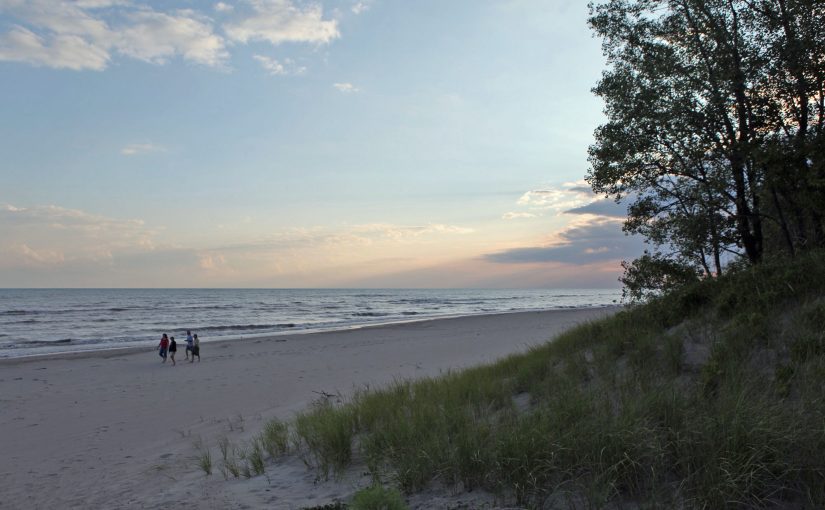Today’s post comes from Assistant Zone Ecologist Jenni Kaija, who shares a story of ecological restoration unfolding at Long Point Provincial Park.
As I made my way down to the sandy shoreline of Cottonwood campground in Long Point Provincial Park, I was overjoyed to spot a huge flock of gull and tern species resting just off shore.
Fall is one of my favourite times to spend time in our provincial parks. Everything was quite peaceful, and the birds seemed to be enjoying the quiet as much as I was.
As I wandered down the beach, I kept my eyes open for signs of other animals enjoying the off season, and some feathers from Canada geese floated down the beach in the wind.
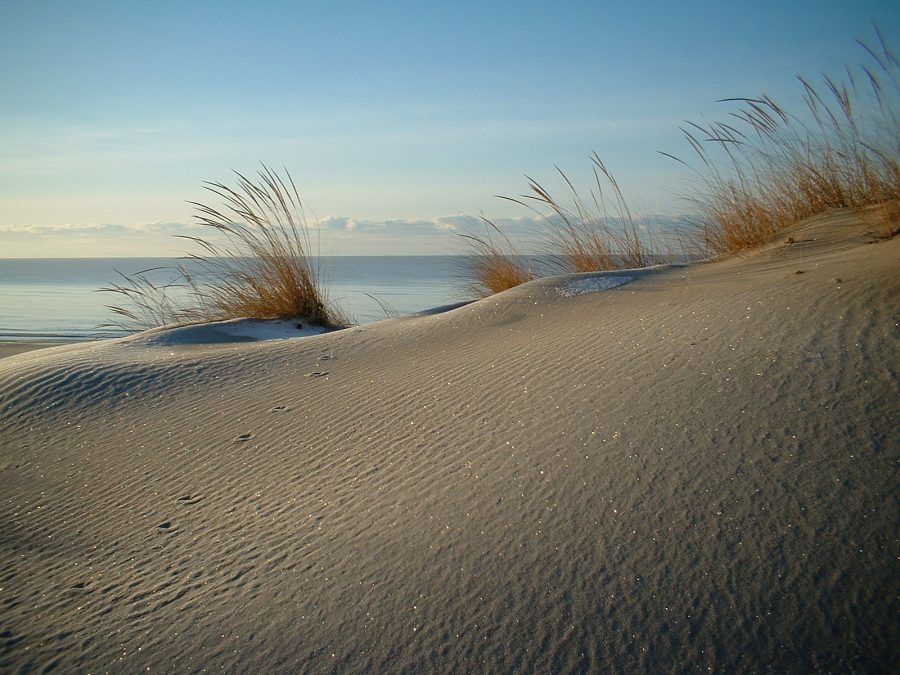
You don’t have to look too far to see that this beach has been used by many different kinds of animals, and it is clear that one type of animal in particular has been using this habitat frequently.
The sandy shorelines protected by many of our provincial parks are one of the most popular destinations for our summer vacations and day-trips. We are very fortunate here in Ontario to have access to these rare dune ecosystems, which make up only about 1.5% of Canada’s Great Lakes shorelines.
We all love a nice sandy beach, but with the high number of visitors these areas receive in the summer months, we may be loving our sandy beaches to death.
As I strolled around on the shoreline at Long Point, I could see the toll summer after summer of visitors is having on the beach and dune ecosystem.
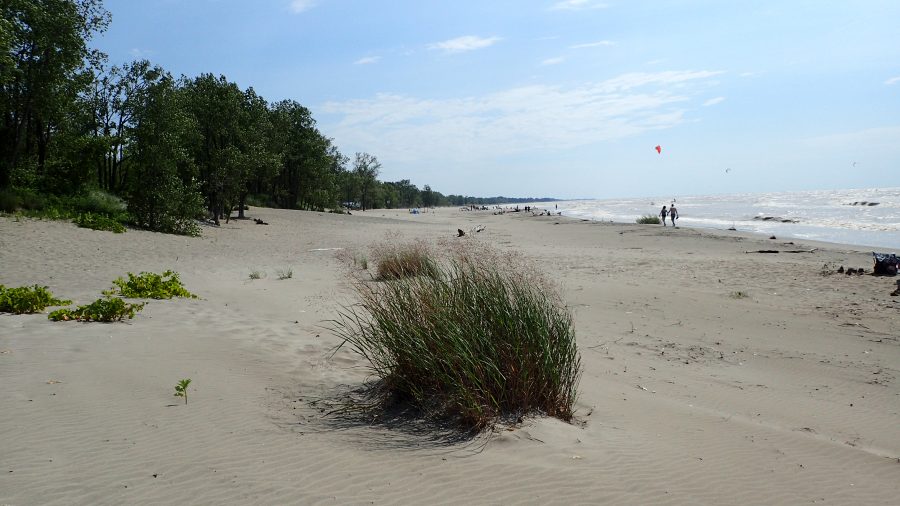
In many spots, the dune vegetation (such as marram grass, which helps to catch and hold sand in place, ultimately creating rolling sand dunes) has disappeared, due to the high number of access paths towards the beach. Where this vegetation has disappeared, sand can be seen blowing into and piling up on campsite and roadways beyond the dunes.
The human footprint on this habitat is substantial, but as I journeyed further down the shoreline, some fencing and ropes became visible. More signs of human activity, but this time it is actually helping the dune grow.
Visitors to Long Point may have noticed some changes to the beach happening within the last three years
Sections of fencing have been erected, pathways to access the beach have been created, and grass has started growing along the beach.
This work has been carried out by Ontario Parks staff and volunteers, who have spent many hours transplanting grasses and pounding posts to help to return this beach to a more natural state.
It will take years to restore the entire beach…
…but with every plug of beach grass that is planted, Long Point is getting closer to restoring the natural state of their beach.
This is beneficial not only to the human visitors to the park, but also to the multitude of species that call the beach home, including species like the endangered Fowler’s toad (Anaxyrus fowleri) and threatened eastern hog-nosed snake (Heterodon platirhinos).
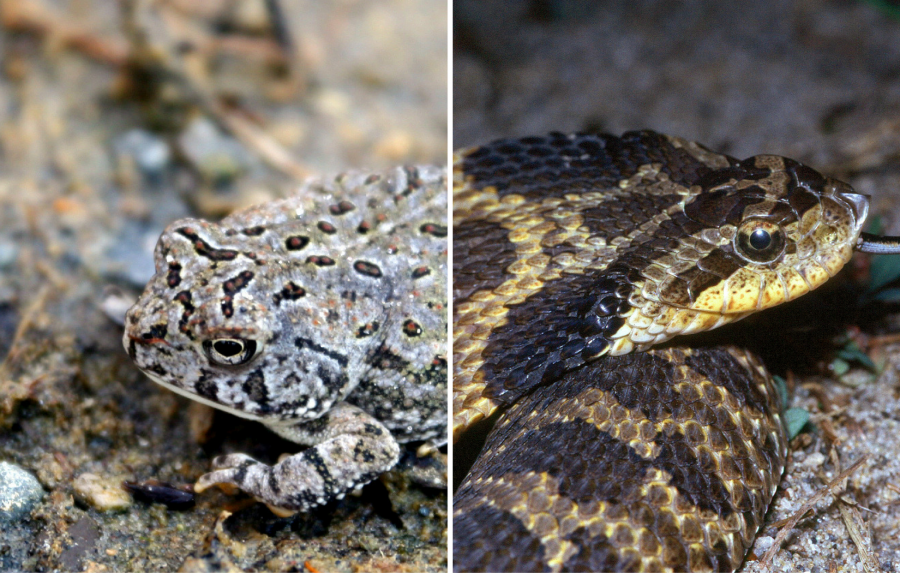
This fall, we have restored an additional 600 m2 of bare sand on the foot of the dune ridge. All of this restoration work will help to ensure that the beach can continue to be enjoyed by current visitors to the park, and generations to come!
Here are the before and after pictures:
In this shot, volunteers and Ontario Parks staff worked to erect snow fencing and plant marram grass on a bare area of sand dunes. This helped to restore over 600m2 of critical habitat for the endangered Fowler’s toad.

Over the winter, the snow fencing will to trap blowing grains of sand that are travelling along the beach. These sand grains will be deposited on the backside (lee-side) of the fence, which will cause a pile of sand to start to build. This pile of sand is our embryo dune.

Marram grass is planted behind this fencing as well. The grass will act to trap sand and will eventually be buried. This will stimulate the grass to grow faster and taller, and allow our embryo dune to grow even larger. The result of this whole project is that the dunes are restored, benefiting both the park and the animals that live in the dune ecosystem.
This is a dune restoration site originally planted in the fall of 2015:
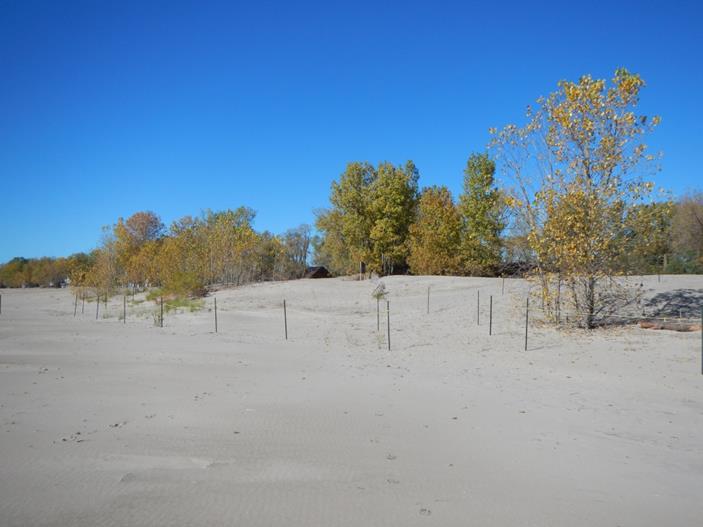
Grass plantings have since taken hold and anchored the sand dunes, designated access pathways have been established, and interpretive signage has been erected:
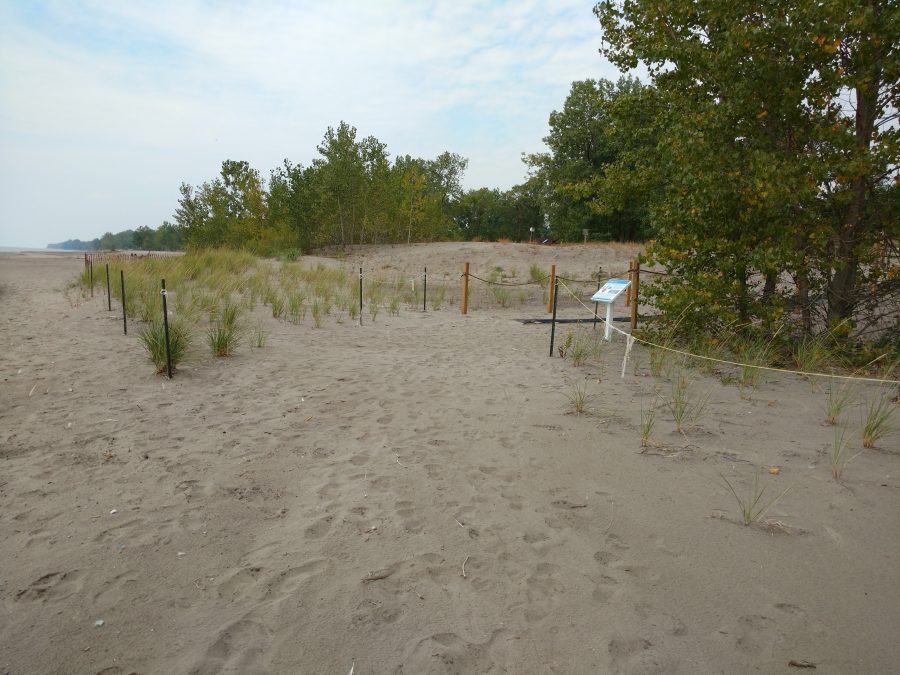
Dune restoration is a long process, as the grass takes a couple of years to establish itself, but before long other dune plants will begin to grow, creating new habitat. Park staff have already noticed a reduction in the amount of sand moving over the dunes and into the campgrounds.
Access pathways have been installed in high traffic areas to allow visitors to enter the beach while also protecting sensitive dune vegetation.
At some of these access paths, interpretive signage has been installed to help educate visitors about the ecology of these fascinating and fragile areas:
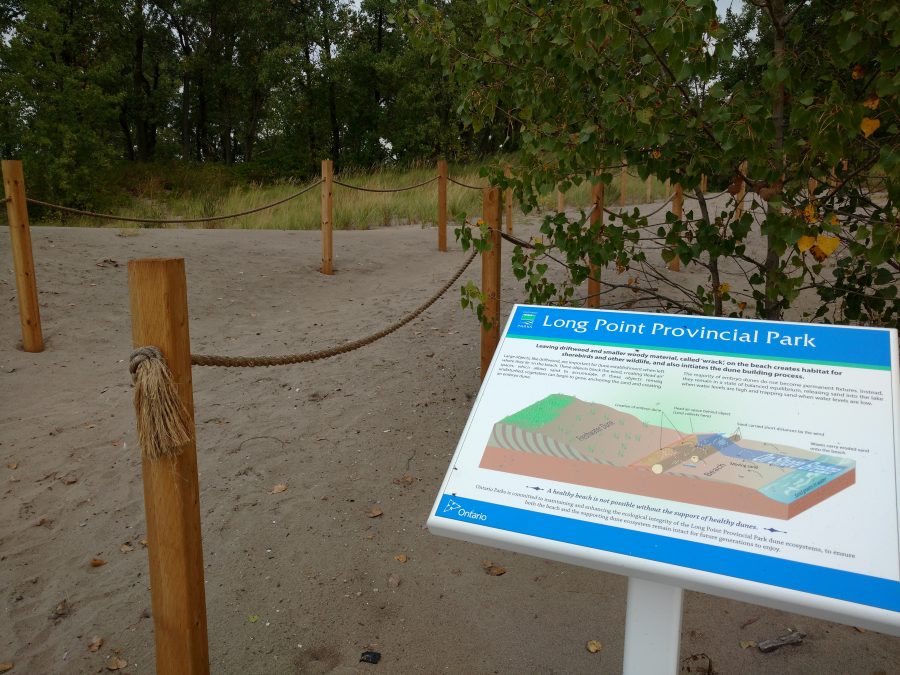
Marram grass plantings will help to trap blowing sand along the beach and help to increase dune size.
T-bar posts have been erected around the restoration sites to prevent trampling by humans:
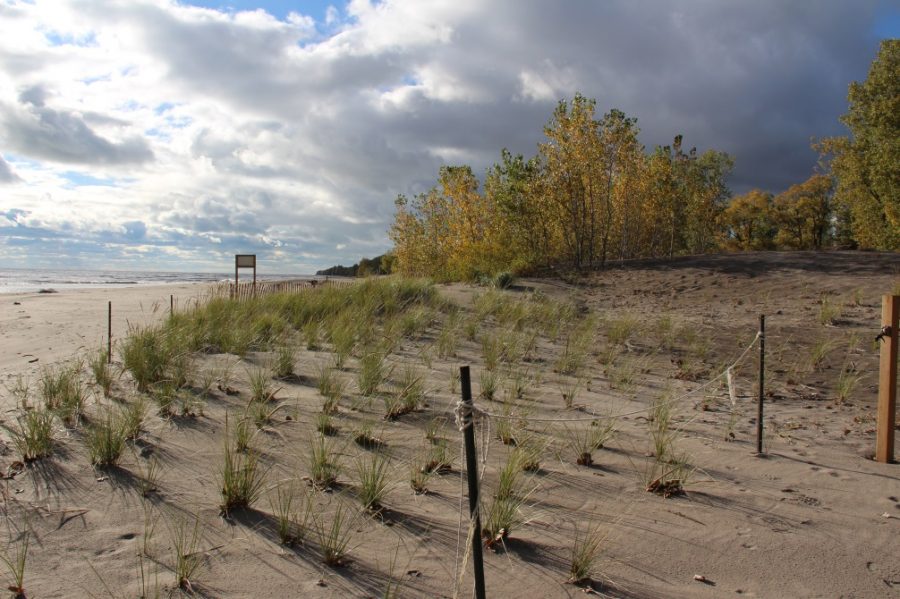
Although marram is very tolerant to sand related disturbance, it is very vulnerable to impacts from trampling by humans and vehicles.
Balancing ecological integrity and recreation is a complicated job.
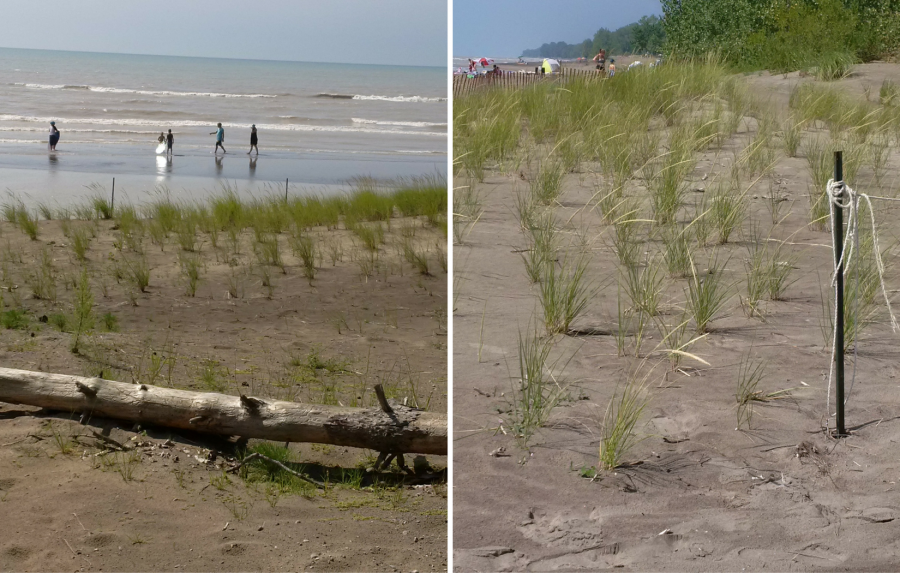
The restoration projects that have occurred so far at Long Point will help to improve the ecological integrity of the shoreline ecosystem, while maintaining ample area for beach goers.
Always remember to share the beach; it’s up to all of us to maintain the balance!
